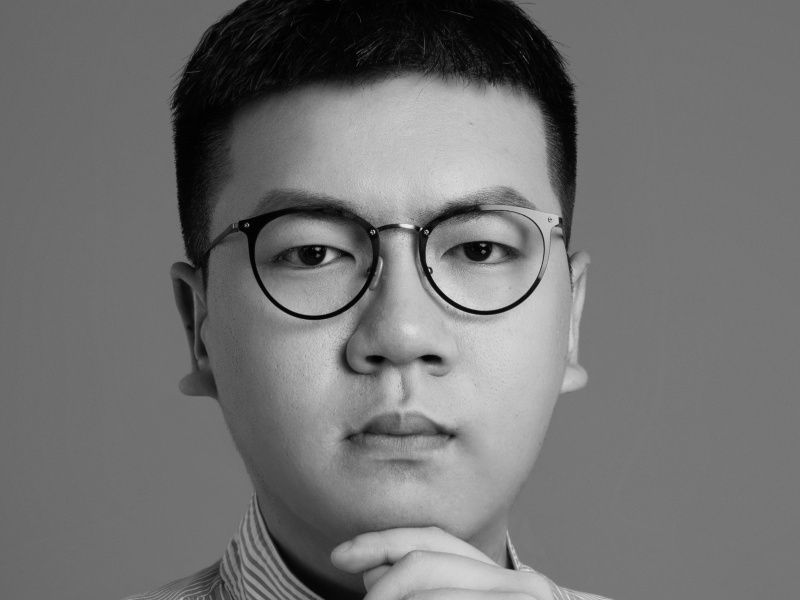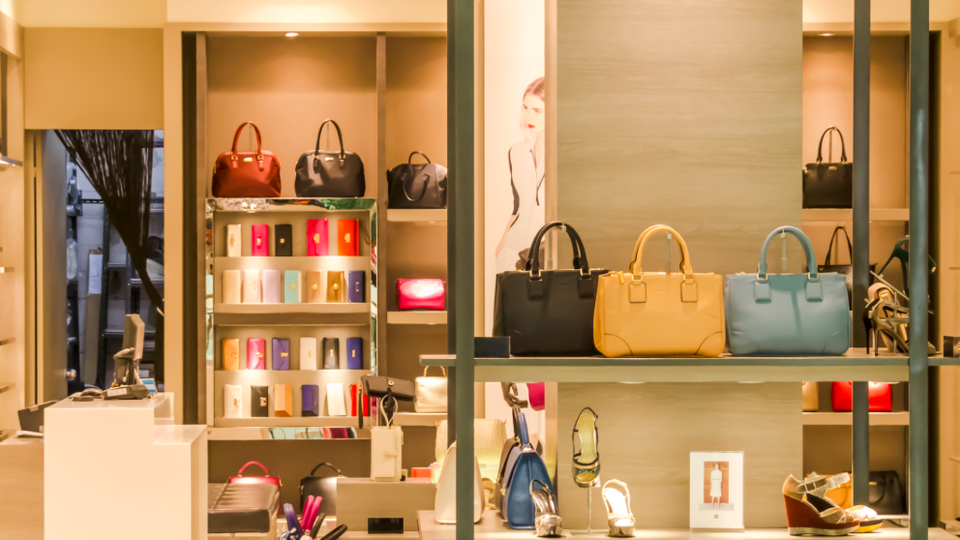The growing presence of Chinese investors in the global fashion and luxury landscape is but a small indication of the market’s potential. As the China market grows in stature, the value of Chinese capital to global brands will continue to expand.

Although the global fashion and luxury industry was hard hit by the global pandemic over the past year, the luxury consumption surge in Asia-Pacific markets has boosted confidence, and also paved the way to recovery for countries in Europe and the U.S. According to Deloitte’s Global Fashion & Luxury Private Equity and Investors Survey 2021, this luxury rebound is apparent in the M&A territory as well, with the Asia-Pacific area (excluding Japan) accounting for 77 of the 277 M&A deals made in the fashion and luxury industry in 2020 – a substantial increase of 33 deals from 2019. As such, 97 per cent of investors surveyed stated they will continue to invest in the fashion and luxury industry.
According to Bain, affluent Chinese consumers are set to make up the largest share of the global luxury market by 2025, and investors from this country are eager to gain a foothold on the international stage. Beyond taking well-performing local brands global, investment firms and industry giants are also looking to bring Western companies into the fold, whether by pouring capital into the China expansion plans of these foreign players, or by buying out the next it brand.
Cross-border deals between Chinese and Western companies are growing in tandem with the Chinese booming fashion and luxury industry. And the image of the Chinese investor is evolving together with it – from the nouveau riche to visionaries that guide international brands in breaking into new markets or business transformations.
Buying out the Next Fashion Giant
Mainland China now accounts for a fifth of the luxury market, but it has yet to cultivate a local conglomerate capable of rivalling Western luxury behemoths. However, Chinese entrepreneurs are already on the move.
One of the most talked-about companies is Shandong Ruyi, which has been dubbed “Chinese LVMH” in the recent years. This Shandong-based company, which started out as a textile supplier, has been acquiring foreign labels since 2010 and has splurged more than $6 billion over the past ten years on a number of big-name labels, including French fashion group SMCP, British brand Aquascutum and the apparel and fabrics business of Invista, the British company that owns Lycra. However, in March last year, Ruyi called off its acquisition of Italian luxury brand Bally due to its inability to secure financing for the $600 million-dollar deal. The company’s share price has now shrunk by more than 80 per cent from its 2015 high to 5.45 RMB.
Ruyi’s relationship with international brands has not been a smooth sailing one. Recently, the company announced that it may sell its 53 per cent stake in SMCP to offset the 250 million Euro convertible bonds that it defaulted on. Ruyi’s losses will continue to mount if SMCP changes hands. The company reported a loss of 44.754 million RMB for the six months ended 30 June, representing a 392.86 per cent increase in losses year-on-year.
While Ruyi may have faltered, this has not deterred other companies from following in its footsteps. Fosun Fashion, the fashion and luxury arm of Chinese conglomerate Fosun International – which has businesses spanning various major industries including pharmaceuticals, real estate and tourism – acquired Italian footwear brand Sergio Rossi in June from private equity firm Investindustrial, with no financial details disclosed. Fosun’s luxury portfolio is currently comprised of mostly apparel brands, including knitwear brand St. John, Italian menswear tailoring label Caruso, and French couture house Lanvin – which Fosun acquired a majority stake in from Taiwanese media mogul Shaw-Lan Wang, beating out Mayhoola, the Qatari royal family-backed investment vehicle that owns Balmain and Valentino.
Fosun Fashion, the fashion division of Fosun Group, was renamed the Lanvin Group in October of this year, to reflect its ownership of Lanvin, Sergio Rossi, and the other fashion and luxury brands acquired by the Group. The group, which is now worth more than a billion dollars, has also received external investments from other investors such as Japan’s Itochu Corp. and Stella Holdings, the parent company of footwear brand Stella Luna. The move not only indicates that Lanvin Group may become another major player in the existing global luxury landscape, but also that Fosun Fashion is beginning to downplay its Chinese background. “We still have 90 per cent of sales coming from overseas markets. China only accounts for 10 per cent of fashion revenues,” stated Joann Cheng, Chairman of Lanvin Group.
Credit: Lanvin
There are other, smaller, Chinese apparel groups such as Ellassay (that have stakes in brands such as IRO and Self-Portrait) and ICICLE group (that acquired French brand Carven) that are also continuously looking to expand their existing portfolio with established Western brands and bolster their presence in overseas markets. Beyond the fashion sphere, cosmetics company Yatsen Global, the parent company of mass beauty brand Perfect Diary – that made it big by meticulously leveraging digital channels – acquired British high-end skincare brand EVE LOM this year to expand its audience base. While inroads are being made, it will still take some time yet for any of these groups to become the next LVMH or L’Oréal in China.
A Pinch of Chinese Wisdom
Given the current sophisticated retail climate, Chinese investors are looking beyond merely making deals and building value in their own backyard – they are also taking on roles in the global M&A scene, helping Western companies consolidate their China-related businesses.
In June, Montreal-based fashion retailer SSENSE received a minority investment from Sequoia Capital China, the Chinese affiliate of the US venture capital firm, marking the first time the retail company has received external funding since its founding eighteen years ago. SSENSE is now valued at $4.1 billion. This deal comes after Angelica Cheung, a leading figure in the Chinese fashion industry, joined Sequoia Capital as Venture Partner after stepping down from Editor-in-Chief of Vogue China. It also the first highlight deal since her announcement on social media that she will continue to focus on fashion, lifestyle and entertainment at Sequoia Capital. Sequoia China says it will support SSENSE in its global expansion and digitalisation.
SSENSE is not Sequoia China’s first investment in the fashion sector. Earlier this year, the investment firm took a majority stake in French designer brand AMI. Notably, this deal is Sequoia China’s first international merger deal. Xia Fan, Vice President at Huasheng Media, the Chinese media group that operates Wallpaper China and WSJ Magazine China, notes that it may seem unexpected that Sequoia China’s first international merger deal is related to a rather traditional industry: Fashion. “However, Sequoia’s approach is clear enough – following the acquisition, it will help the brand to complete its digital transformation. This seems like the sincerest form of investment in a traditional industry from a venture capital fund that is better known for its an eye on the technology sector,” she explained.
In her opinion, the union between Sequoia China and AMI is different from traditional brand acquisitions. Traditional capital injections generally aim to provide target companies with support in areas such as domestic expansion and establishment of supply chains. However, the entry of an international brand into the Chinese market would naturally come with operational changes, and this type of power shift can make or break a brand in the market. “As an investor, Sequoia China provides value and resources for transformation to brands, while also consciously retaining the operational structure of the brand’s existing team,” says Fan. “This sets the stage for smooth implementation of strategies in the company’s new phase.” Today, Alexandre Mattiussi, AMI’s founder, and Nicolas Santi-Weil, Chief Executive Officer, are still in place.
Credit: AMI
Perhaps the dynamics of AMI and Sequoia China’s relationship is an exception rather than the rule, as acquisitions of Western fashion and luxury brands by Chinese venture capital or private equity firms are still a rarity. However, Chinese investors have long been a part of the funding source of international companies. IDG Capital, for example, has ventured into contemporary fashion brands such as Acne Studio and Gentle Monster. The company also led Farfetch’s Series F funding in 2016 and helped build its Chinese team, as well as introduce strategic investors such as Alibaba, Tencent and JD.com to gradually navigate Farfetch’s exploration of the local digital ecosystem. “There is no geographical limit for a brand to step up their efforts on a digital level, and the Chinese market is leading the way in this area. The involvement of Chinese investors helps brands to replicate and expand their attempts in the global market,” Fan added.
(Re)Building from Scratch
However, it takes more than just capital and scale to make a brand “luxury” – established luxury houses in the industry are all built on cultural recognition. Which is why Shanghai Tang, founded in 1994 by Hong Kong entrepreneur David Tang, is expected to become China’s first global luxury brand, under the control of Chinese private equity firm Lunar.
The brand, which aims to celebrate traditional Chinese tailoring, was favoured by Richemont Group at the end of the 20th century and brought into the conglomerate’s fold. However, it stayed under the radar until 2017, when Italian entrepreneur Alessandro Bastagli and a few other investors bought a majority stake of the brand from Richemont. The Italian impresario hired Massimiliano Giornetti, former Creative Director of Salvatore Ferragamo, to take the helm and set a team and supply chain in Italy, hoping to attract young consumers with Italian craftmanship coupled with oriental flares. Unfortunately, this Italian-Chinese marriage did not last long, and in 2018, the brand returned to its homeland, after Lunar bought out Bastagli and other shareholders. Today, Lunar has full ownership of Shanghai Tang.
Shanghai Tang has undergone a huge shake-up in Lunar’s hands. Victoria Tang, the eldest daughter of David Tang, who replaced Giornetti as Creative Director, left the company at the end of last year, while Shirley Tai replaced Maurizio De Gasperis as Chief Executive.
Shanghai Tang is rumoured to have engaged Chinese fashion media veteran Dan Cui – who has been involved in creative projects with numerous local brands since stepping down as Editor-in-Chief of T Magazine China in 2018 – to head up its rebranding. The brand also invited former Maison Kistuné creative director and Celine design director, Yuni Ahn, to create its most recent 2021 Pre-fall collection. It also worked with Chinese models and photographers such as Yuangui Mei and Wu Zeng to shoot the campaign. The collection itself is a far cry from the sophisticated traditional Chinese style of the old Shanghai Tang. The brand has yet to announce a successor for its creative director role as well.
Credit: Shanghai Tang
Within the private equity sector, Lunar, which has been long established in the consumer goods industry, has shown a completely different play style. Besides offering the localised support that is often brought on by mid- and early-stage venture capital, the company also looks to build brands with rich histories from the ground up – from management style to designs and narratives, redefining traditional symbols and brand equity.
Apart from Shanghai Tang, there are many other brands that are floundering (oriental background or not) and waiting for wealthy Chinese investors to make their move. In parallel to the growth of Chinese consumption, the evolving role of Chinese capital in the global fashion industry is just another indication of the burgeoning Chinese luxury market. China has gone from being exposed to fashion, to understanding it – and now it is ready to change the definition of it.
The tables have finally turned.










